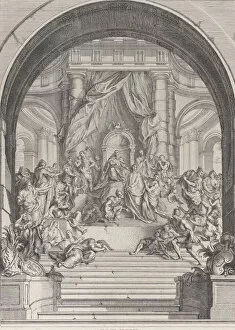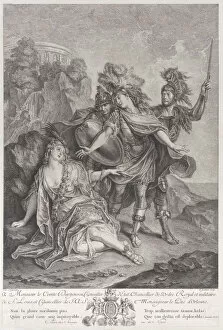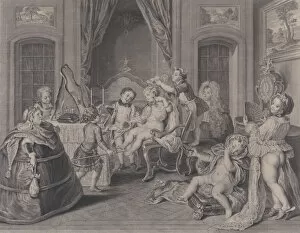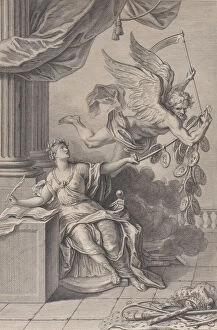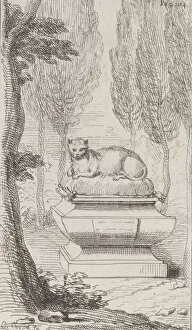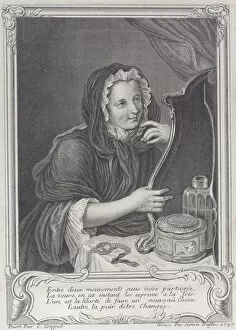Coypel Charles Antoine Collection
Coypel Charles Antoine was a renowned artist known for his captivating and diverse works of art
All Professionally Made to Order for Quick Shipping
Coypel Charles Antoine was a renowned artist known for his captivating and diverse works of art. One of his notable pieces is Plate 30: Don Quixote consults the enchanted head at Don Antonio Moreno's house, which showcases his exceptional talent in capturing the essence of this iconic literary character. The attention to detail and vibrant colors used in Coypel's artwork bring the scene to life, allowing viewers to immerse themselves in Don Quixote's world. Another fascinating creation by Coypel is the Furnishing Fabric titled Don Quichotte (Don Quixote), originating from France around 1785. This fabric design reflects Coypel's ability to seamlessly blend different artistic styles, resulting in a visually stunning piece that adds elegance and sophistication to any interior space. In Bold satire in the depths of the forest (Satire audacieux, dans le fond des forets), Coypel demonstrates his mastery of satirical art. Through clever symbolism and exaggerated imagery, he critiques societal norms with wit and humor. This thought-provoking artwork challenges viewers to question their own beliefs while appreciating Coypel's skillful execution. One cannot overlook Ecce Homo, Rinaldo abandoning Armida, Jacob crying into his sons' robe while his other sons pull it away from him or Heads after Ecce Homo - all masterpieces created by Francois Joullain but influenced greatly by Coypel Charles Antoine himself. These collaborations showcase both artists' shared passion for storytelling through visual art forms. Additionally, Aymon Premier highlights another collaboration between Caylus Anne-Claude-Philippe de and Francois Joullain under the guidance of Coypel Charles Antoine. This historical depiction captures a significant moment in French history with remarkable accuracy and attention to detail. Spring (Le Printemps) and Summer (L'Ete) are two more Simon Francois Ravenet collaborating with Coypel Charles Antoine.




